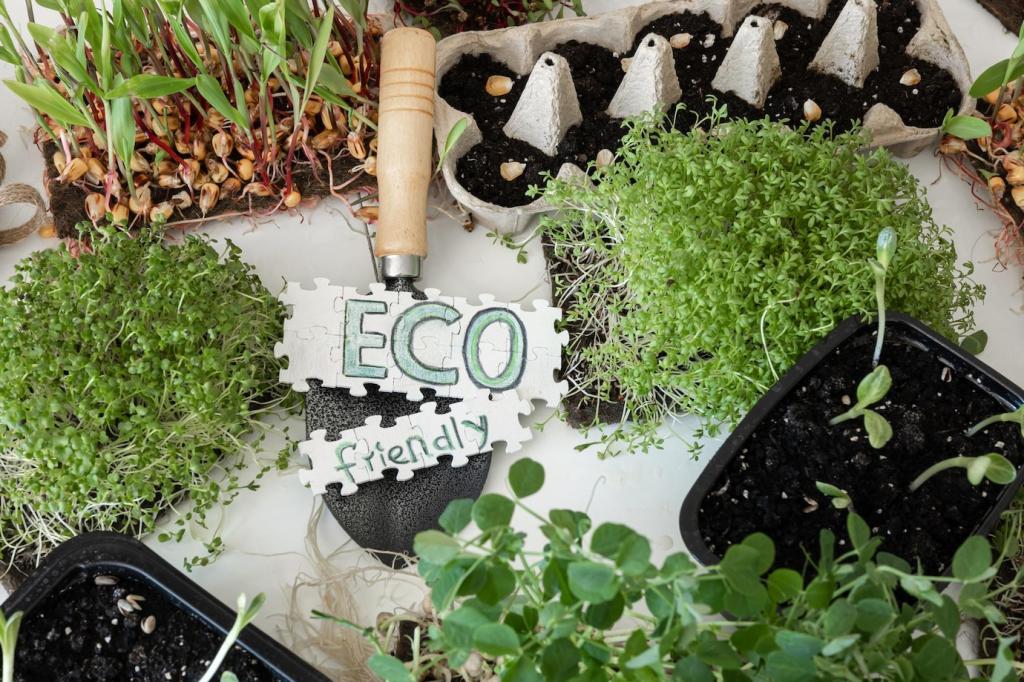
Naturally Brilliant: Plant-Based Furniture Care Tips
Chosen theme: Plant-Based Furniture Care Tips. Welcome to a home care journey where lemons, vines, and tree-born oils become everyday heroes. Let’s revive wood, refresh fabrics, and protect finishes with recipes and routines that are gentle on your furniture and kinder to the planet.
Plant-Powered Care Fundamentals
Before reaching for vinegar or a natural oil, identify whether your furniture is oiled, waxed, lacquered, or polyurethane-sealed. Plant-based products behave differently on each surface, so spot-test in a hidden area, observe any dulling or streaking, and adjust your dilution or product choice accordingly.

Recipes That Really Work
Everyday dusting spray
Combine distilled water with a splash of white vinegar and a teaspoon of liquid castile soap made from olive or coconut oils. Shake, lightly mist a soft cotton cloth, and dust along the grain. The soap lifts settled particles while the vinegar cuts light smudges without a heavy residue or synthetic fragrance.
Creamy wood polish
Melt a small amount of carnauba wax with jojoba oil over gentle heat, whisk until creamy, and cool. Optionally scent with one drop of lavender or sweet orange essential oil per ounce, staying within safe dilution. Rub sparingly, rest ten minutes, then buff until your surface gleams like a summer afternoon.
Upholstery refresher mist
Brew weak green tea, let it cool, and add a few drops of plant-derived grain alcohol as a preservative. Lightly mist over fabric from a distance and allow to air-dry. Always test on an inconspicuous spot first, especially with light upholstery, as natural tannins can interact with certain dyes.
Stains, Scratches, and Real-Life Saves
A quick family dinner turned into a visible scratch on an oak tabletop. We gently rubbed a halved walnut along the grain, letting the natural oils and pigments darken the mark. After a patient buff with a cotton cloth, the scratch blended beautifully, and dessert tasted better without the regret.



Seasonal Care with Plant Wisdom
Cold air and heating systems dry wood. Lightly condition exposed wood with a thin coat of tung oil, allow thorough curing, and buff. Keep pieces away from vents, and dust often with a barely damp castile-soap cloth to minimize static, then dry. Share your winter routine with us to inspire others.
Repair and Revival, Plant-Style
Lightly sand to remove grime, wipe dust with a damp cotton cloth, then apply thin coats of pure tung oil along the grain. Let each coat penetrate and cure before the next. Final buffing rewards patience with a deep, resilient luster that makes old wood feel vibrantly alive again.
Brew strong black tea or coffee to add warm tone to bare wood, testing intensity on scrap first. Wipe on evenly, let dry, and seal with a plant-based oil. Layering deepens richness while keeping the palette organic. Show us your before-and-after photos—we love celebrating thrifty, creative transformations.
Finish with a carnauba or candelilla wax blend for a hard, plant-derived shield. Apply sparingly with a soft cloth, allow haze to form, then buff until your reflection smiles back. The feel under hand is silky, the scent subtle, and the protection real against everyday scuffs and spills.

Join the Plant-Care Circle
What recipe rescued a beloved piece in your home? Drop your most trusted Plant-Based Furniture Care Tips in the comments. Your story could guide another reader through a scratch scare or stain surprise, and we may feature it in an upcoming spotlight with full credit and celebration.


Join the Plant-Care Circle
Get fresh, seasonal blends, safety notes, and quick wins delivered to your inbox. We’ll keep it practical, fragrance-light, and furniture-focused. Hit subscribe, and never miss a gentle nudge to re-wax, re-buff, or remix a cleaner that makes your favorite surfaces shine with natural confidence.
Join our mailing list
